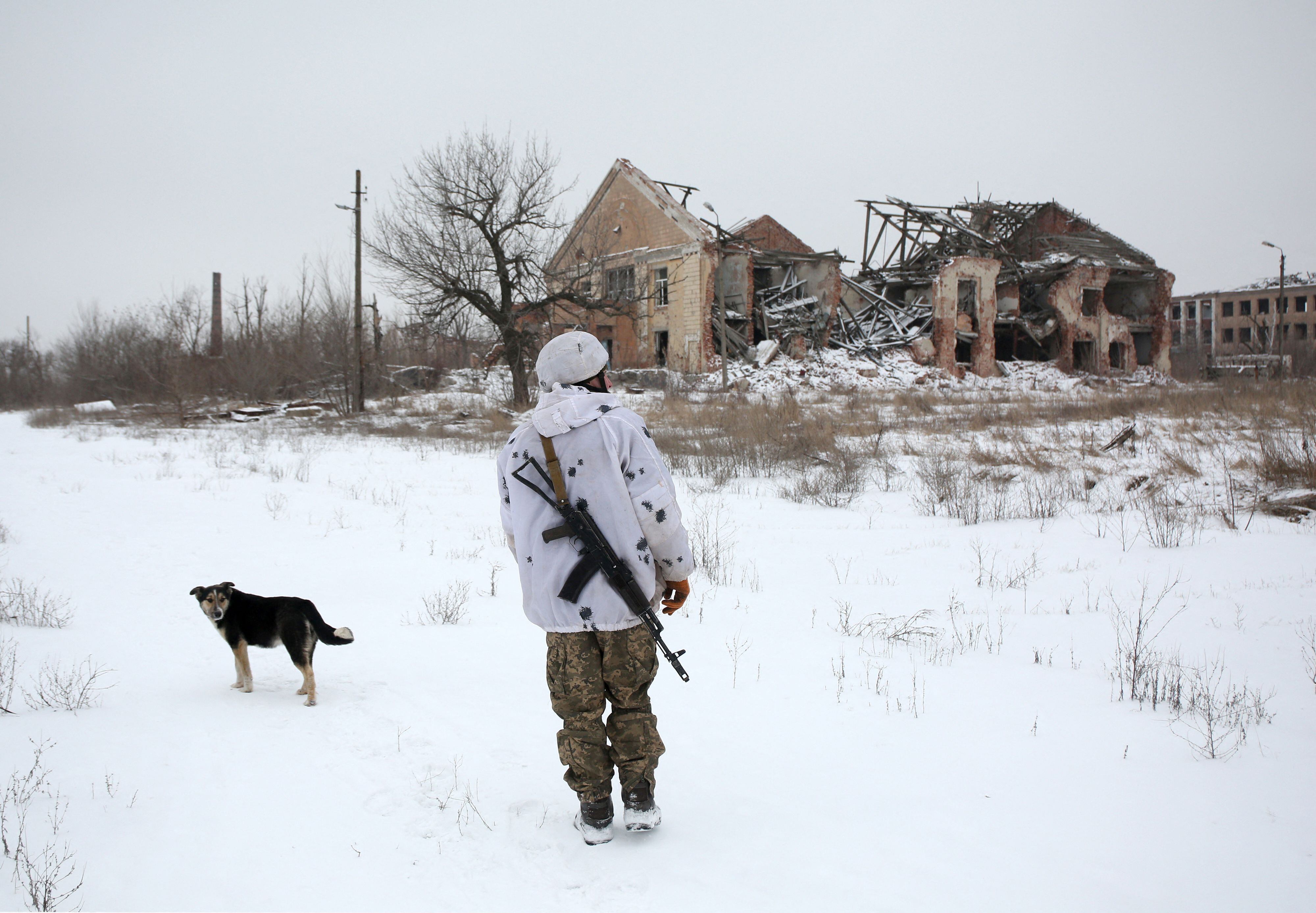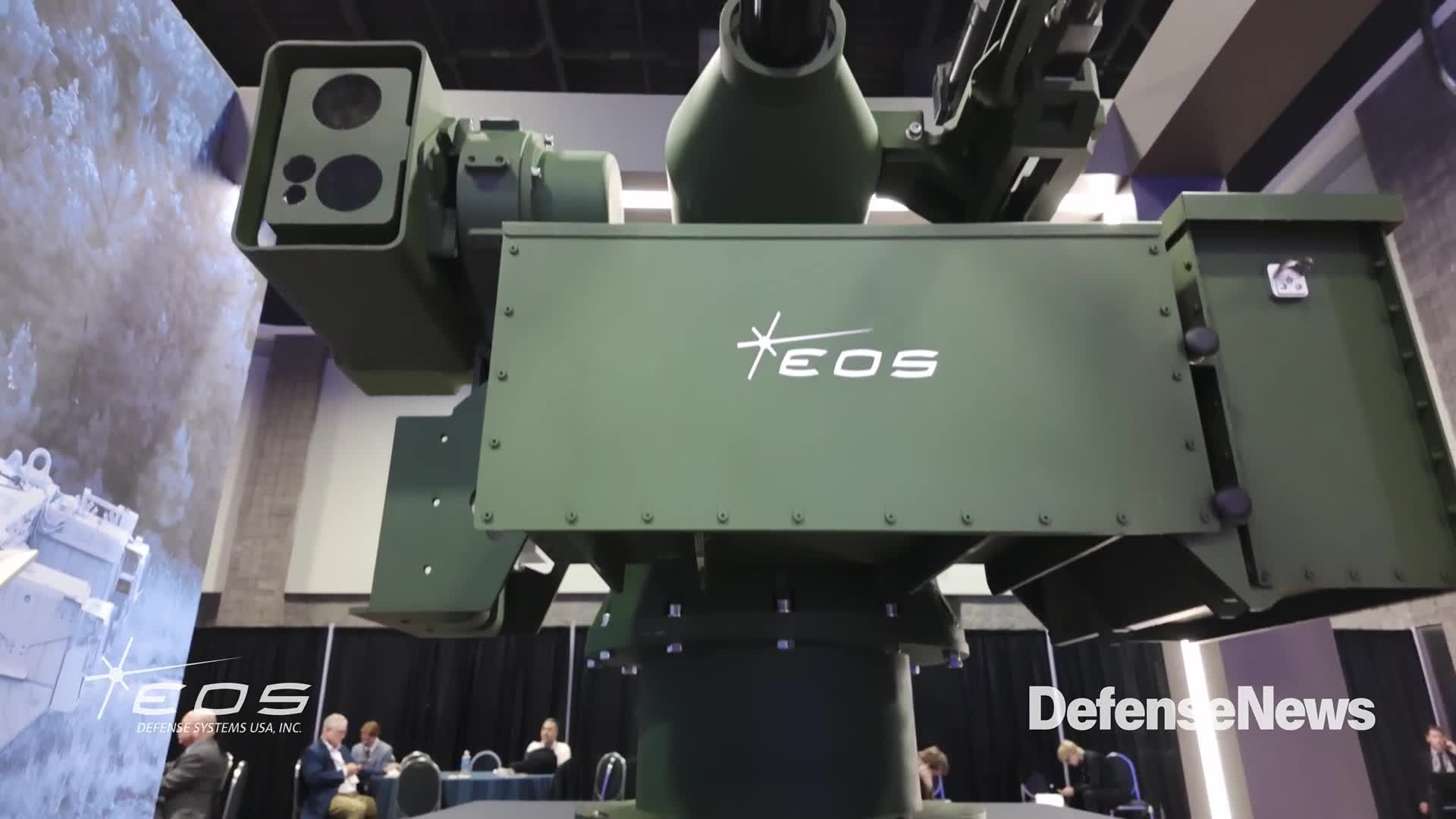Some American troops are on standby as the world waits to see whether Russia will invade Ukraine, but the U.S. Air Force’s involvement in the conflict is already well underway.
U.S. and allied reconnaissance flights in the region have been ongoing since at least Dec. 24, dispatching multiple types of military planes to serve as extra eyes and ears over Eastern Europe.
On Wednesday alone, aviation radar-tracking sites showed at least eight American and Swedish aircraft flying over Ukraine, the Black Sea and the Baltics. They included two RC-135V/W Rivet Joint planes equipped to listen in on communications signals and an RQ-4 Global Hawk drone that gathers high-altitude images and other data through various sensors.
RELATED

The Global Hawk may have been peering down at a string of Russian troops built up along the border it shares with Ukraine, as well as to the smaller country’s south, expert analysis posted online suggests.
“This is the second RQ-4 flight to make this pattern in the last week, making use of the same airframe,” aviation tracking hobbyist Amelia Smith tweeted Monday. “There is a possibility that we will see the return of the daily RQ-4 flights over and around Ukraine.”
She noted an MQ-9 Reaper drone’s visit to Russian-occupied Crimea in southern Ukraine on Jan. 21. Twitter user @ZaesADSB, another flight tracker, caught an E-8C Joint STARS jet — designed to track the movement of ground targets — headed east over Ukraine three days earlier as well.
They’ve been joined by Rivet Joints, E-3 airborne target tracking planes, P-8 antisubmarine patrol jets and other military airframes flown by NATO, the United Kingdom, Germany and the U.S. Army and Navy. Spokespeople for U.S. European Command and Air Force officials in the region did not respond to a request for comment on Wednesday.
“One of this command’s primary tasks is to provide indications and warning of military developments to our nation’s leaders and we also contribute to NATO’s shared understanding of developments in Europe,” EUCOM spokesperson Lt. Cmdr. Russ Wolfkiel told Air Force Times when contacted about the U.S. response to a similar Russian troop buildup last spring. “With regard to U.S. activities, I can tell you that we have been watching the situation in Ukraine very closely and USAFE’s contributions with airborne ISR are indispensable to maintaining a coherent picture of ongoing developments. However, in the interest of operational security and as a matter of policy we do not provide details on specific missions.”
Though not flying missions over Ukraine, Air Force assets that could be called up for strike operations are nearby.
F-15E Strike Eagles from Seymour Johnson Air Force Base, North Carolina, arrived in Estonia Wednesday to bolster NATO’s air policing efforts in the Baltics. Those missions deploy offensive and defensive aircraft to fend off planes that try to enter NATO airspace without permission and have grown more frequent since the last time Russia used major force against Ukraine in 2014.
Ukraine is not a NATO member, but sides with the Western military coalition and receives aid from those nations. Russia is pushing NATO to permanently bar Ukraine from ever joining the coalition, which would extend it the protection of its mutual defense pact. Secretary General Jens Stoltenberg said the organization will respect any country’s own decision whether to apply for membership or not.
Experts have speculated an incursion could serve as a step toward rebuilding a Soviet Union-like bloc, as well as to bolster Russian President Vladimir Putin’s popularity ahead of a reelection bid in 2024.
Brig. Gen. Kyrylo Budanov, head of Ukraine’s defense intelligence agency, told Military Times in November he believed Russia would launch an attack by the beginning of February. That could involve airstrikes, artillery and armor attacks, plus airborne and amphibious assaults across the country, Military Times previously reported.
Ukrainian Defense Minister Oleksii Reznikov said on Tuesday the former Soviet republic expects to receive a fourth shipment of weapons and other military hardware from the U.S. soon.
The U.S. Air Force posted pictures of airmen loading Lockheed Martin-made shoulder-fired Javelin anti-tank missiles, launchers and other supplies onto commercial jets Jan. 21-22. Those units, the 60th Aerial Port Squadron and the 436th Aerial Port Squadron, are respectively based at California’s Travis Air Force Base in California and Delaware’s Dover Air Force Base.
“Since 2014, the United States has committed more than $5.4 billion in total [security and non-security] assistance to Ukraine,” the Air Force said in captions of photos showing the ammunition’s journey from Dover. “The United States reaffirms its steadfast commitment to Ukraine’s sovereignty and territorial integrity in support of a secure and prosperous Ukraine.”
The U.S. Air Force is likewise pressing ahead with a plan to supply two air bases in central west Ukraine with navigation systems, including one that helps determine an aircraft’s position in relation to its destination and another that offers precision guidance for runway landings. A solicitation posted to the federal procurement website Dec. 21 calls for proposals by Feb. 10.
Russia has amassed more than 100,000 troops on three sides of Ukraine over the past few months, prompting backlash from Western countries and stoking fears of war in Europe. The Pentagon responded by putting 8,500 troops from undisclosed units on heightened alert in support of NATO’s multinational response force.
“We call on Russia once again to immediately de-escalate the situation,” Stoltenberg said Wednesday. “NATO firmly believes that tensions and disagreements must be resolved through dialogue and diplomacy, not through force or the threat of force.”
Rachel Cohen is the editor of Air Force Times. She joined the publication as its senior reporter in March 2021. Her work has appeared in the Washington Post, the Frederick News-Post (Md.), Air and Space Forces Magazine, Inside Defense, Inside Health Policy and elsewhere.








